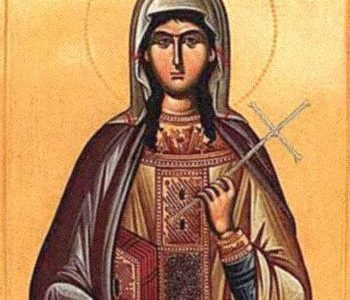Each year, we give the Solemnity of the Ascension short shrift. We seem to squeeze it in between the presumably more important Solemnities of Easter and Pentecost. Some argue that transferring this traditional holy day of obligation from Thursday (i.e., forty days after Easter) to the following Sunday in the Roman calendar makes us lose sight of its importance. Others argue that transferring it to the Lord’s Day helps us connect it more intimately to the Resurrection. Whatever the case may be, there are deeper theological reasons for which a reappreciation of the mystery of the Ascension is urgent.
To understand this mystery, we must first recognize the biblical roots of two key phrases that describe the event. We read in Chapter 1 of Acts that Jesus “was lifted up” (verse 8), but we also read that he was “taken up” (verse 9). The former, in light of its use in the Old Testament, refers to Jesus’s royal enthronement, while the latter speaks to “the power of God who introduces Jesus into the space of closeness to the Divine” (Benedict XVI, Homily, 24 May 2009). The cloud that took Jesus from the disciples’ sight evokes God’s relationship with Israel in the Old Testament by alluding to the cloud through which the Lord led his people through the desert (cf. Exod. 13:21), the cloud in which He appeared to Moses on Mount Sinai (cf. Exod. 34:5), and the cloud by which the Lord indicated his presence in the tent of the Covenant (cf. Exod. 40:34 ff.). The image also directly alludes to the cloud witnessed by the apostles on the mountain of the Transfiguration (Matt. 17:5; Mark 9:7).
We often forget how closely our credal confession that Jesus Christ is “seated at the right hand of God” is bound to the Ascension. The latter expression, Pope Benedict XVI explains, conveys that through the Ascension “the human being has entered into intimacy with God in a new and unheard-of way; man henceforth finds room in God forever” (Benedict XVI, Homily, 24 May 2009). In other words, even while still on earth, we celebrate a presence in heaven. The Ascension is the key to understanding an unprecedented kind of existence here and now, an existence replete with divine presence, precisely because Christ, in his humanity and divinity, reigns at the right hand of God the Father in heaven. “Heaven,” Benedict explained, is nothing other than “man’s being in God” (Ibid.), and we live that reality already in the here and now.
Such an understanding of the Ascension will have an immediate practical effect on our spiritual lives. If we think of the Ascension simply as an explanation for why we cannot see Christ now on this earth, or merely as an exhortation to continue his work until he comes again, we miss an extraordinary opportunity for profound joy, for that is precisely what the disciples felt after seeing him lifted up into heaven (cf. Luke 24:52). Saint Leo the Great notes the stunning transformation of “everything which had previously filled [the disciples] with fear” into “joy” (Sermon 74). Pope Benedict XVI notes that this joy “stems from the fact that what had happened was not really a separation” or a permanent absence, but rather a certainty that “the Crucified-Risen One was alive and that in him God’s gates, the gates of eternal life, had been opened to humanity forever.” At its core, the Ascension is not the mystery of the Lord’s temporary absence, but rather “the new, definitive and insuppressible form of his presence by virtue of his participation in the royal power of God” (Benedict XVI, Homily, 24 May 2009).
If we are unsure whether our joy genuinely stems from the Ascension, we have to answer but one, simple question: are we enthusiastic about sharing this joy with others? The proximity of Ascension to Pentecost reminds us that, emboldened like the disciples, we are ready to make the Lord’s presence visible through our witness. The sight of the “two men dressed in white garments” (Acts 1:10) connects the Ascension to the Transfiguration (cf. Matt. 17:1-8) and the Resurrection (Luke 24:4), implying that our lives are immersed in the Lord’s pre-resurrection, resurrection, and post-resurrection glory. Though fragile, sinful, and imperfect, we are nonetheless capable of revealing the glory of the Lord through our lives thanks to the joy of the Ascension. The Transfiguration reminds us that suffering lies right around the corner. The Resurrection reminds us that suffering does not last forever. The Ascension reminds us that the suffering right around the corner is precisely what leads to a joy that lasts forever.
It would be a grave mistake to think the Church exists merely to compensate for her Lord who has “disappeared.” On the contrary, the Church finds the very “reason for her existence and mission in the invisible presence of Jesus, a presence working through the power of his Spirit” (Benedict XVI, Homily, 24 May 2009). Above all, the Ascension reminds us that the Church is alive not in spite of the Lord’s absence, but precisely because of his presence. The Ascension reminds us that the Lord is more present than ever precisely because he has really returned to the Father where he “always lives to make intercession” for “those who draw near to God through him” (Heb. 7:25). The Messiah’s kingdom has begun precisely because Christ sits at the Father’s right hand, where “his dominion is an everlasting dominion, which shall not pass away, and his kingdom one that shall not be destroyed” (Dan. 7:14).
The post-Resurrection joy of Easter only increases over this special season. We have fifty days to open our hearts to the ascended, ever-present Christ who pours out his life for us unceasingly in the Eucharist so that we might share in his divine life. Regardless of whether it falls on a Thursday or a Sunday, it is a joy not to be missed.
Photo by Billy Huynh on Unsplash










